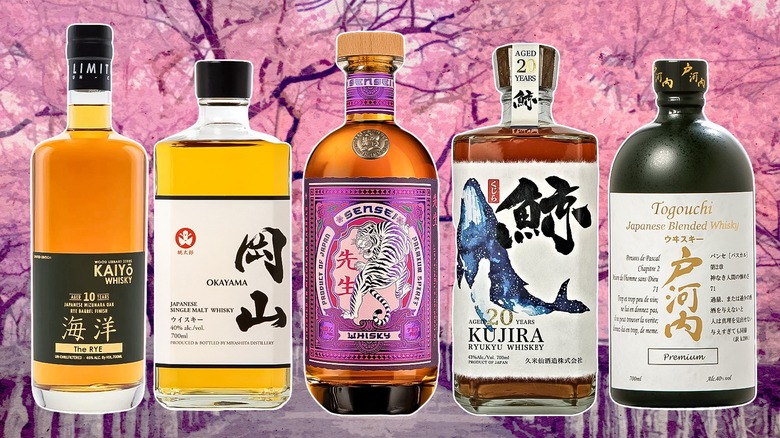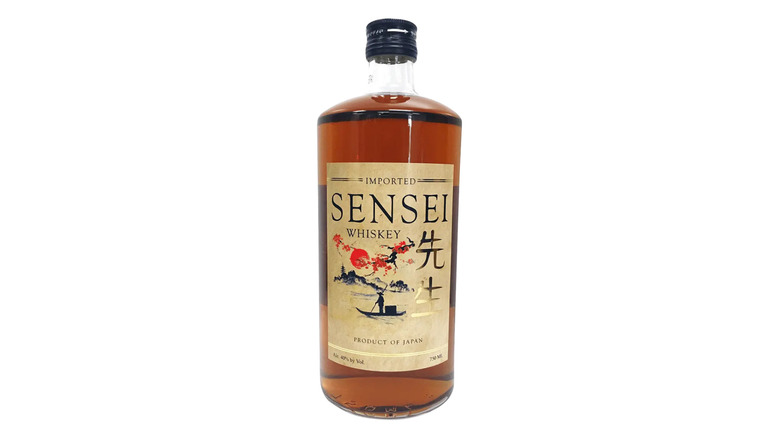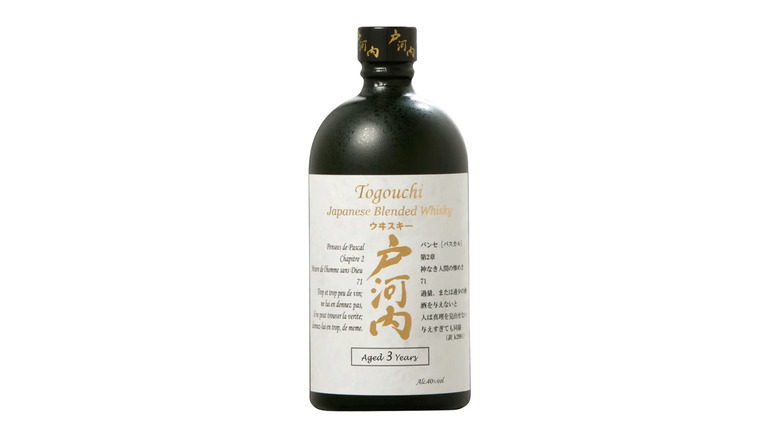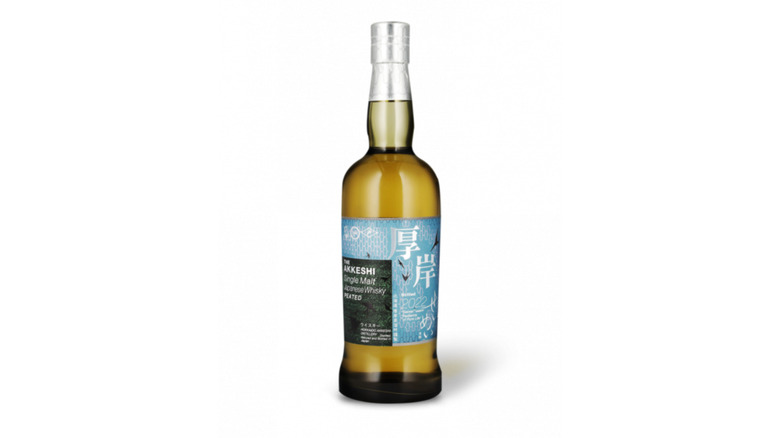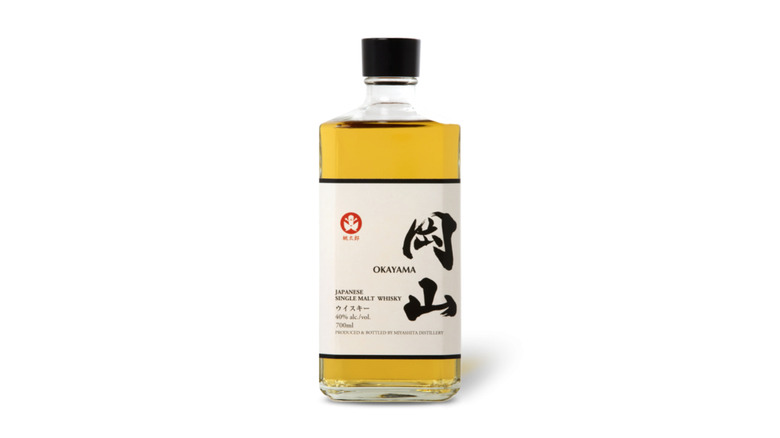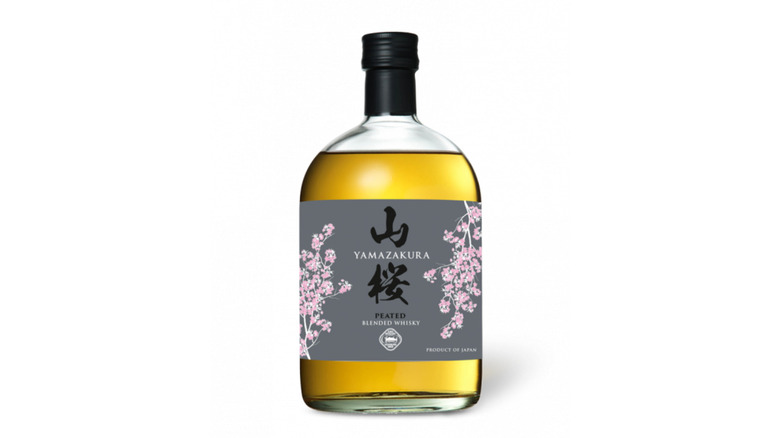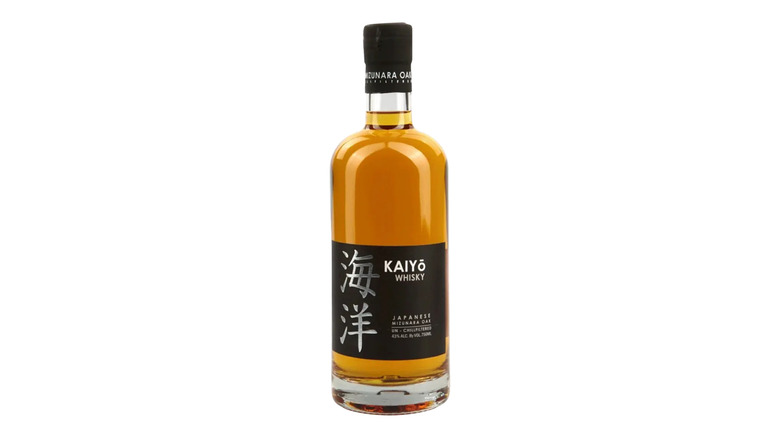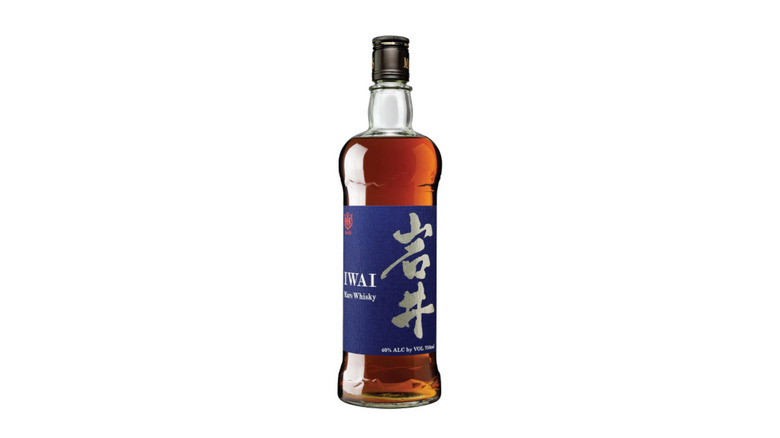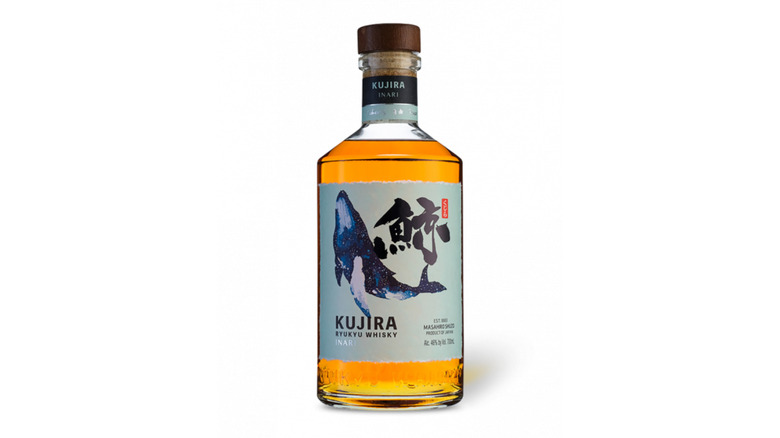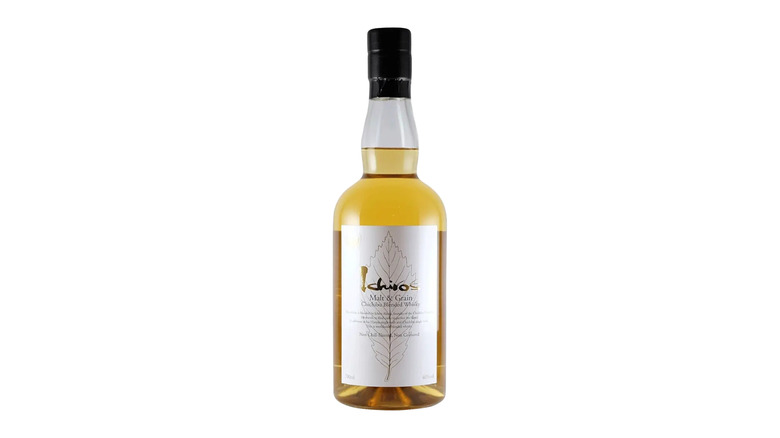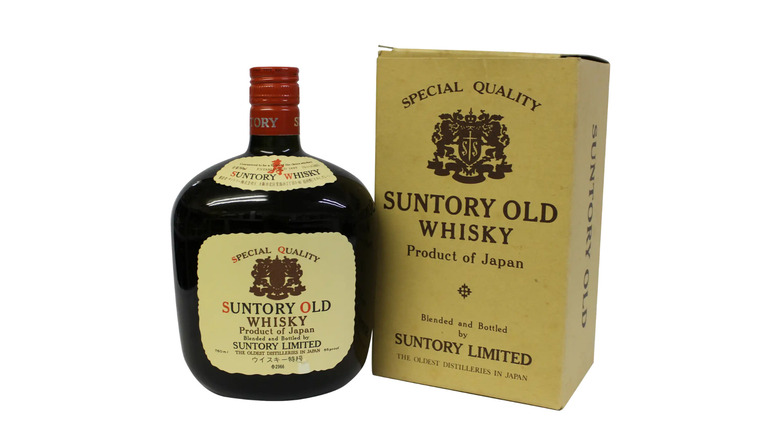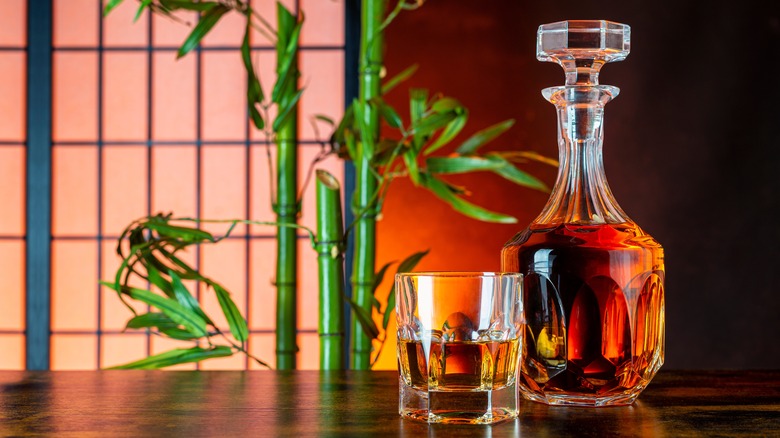11 Japanese Whisky Brands, Ranked
These days, there's no shortage of hype around Japanese whisky, but identifying the best brands can be a little trickier than expected, especially if you're just getting started on your foray into whiskies from Japan. As a relatively new market, at least in whisky terms, there are only a handful of well-known producers, with new distilleries of varying quality frequently appearing to make the most of the increased reputation demand.
For the most part, modern Japanese whiskies are strongly influenced by Scotch, following similar production methods and pursuing similar taste profiles. However, a factor that can make identifying great Japanese whisky trickier is the rarity of many of its bottles. As stocks dwindled during the market boom, bottles became harder to source, so prices inflated. However, rarity doesn't equate to quality, so while some bottles command high prices, this doesn't necessarily mean you're going to get a whisky that's worth what you pay for it.
As a whisky-lover with a long career in the high-end bar industry and a passion for popping my head into whisky stores and bars throughout my travels, I've been fortunate enough to try a wide range of brands, and learn much about the history – and possible future – of whisky in Japan. Below, is my personal selection of those worth keeping an eye out for if you're looking to delve deeper into the world of Japanese whisky.
11. Sensei
First up we have Sensei, a Japanese whisky brand hailing from Yamanashi Prefecture near the base of the famous Mount Fuji. To date, the brand only offers a single whisky — a blended expression — and it might not be considered a true Japanese whisky in the near future.
Sensei is a bit of a strange brand in the sense that it's produced by a spirits distributor, so it's hard to pin down a lot of specific details about the whisky itself. As for its classification, the whisky is labeled as imported, so its blend likely includes whiskies that have been shipped over from distilleries in Scotland before being finished and aged in Japan. Recently, some of the industry's major players have banded together to create an industry-standard, so certain expressions will no longer be labeled as Japanese whisky unless all the components come from Japan, including bottles from some of the industry's biggest players.
Sensei is a perfectly serviceable dram that draws inspiration from the region, elegantly balancing malt and grain characteristics. It opens delicately with aromas of fresh apple and orange blossom, and showcases tasting notes of sweet oak, light caramel, a touch of spice, and some flowery undertones that culminate in a floral, almost gin-like finish. Aging in Mizunara oak barrels offers a unique flavor; however the whisky's youth means it's not as smooth as it could be, and while you can enjoy it neat, it's better used in conjunction with a light mixer.
10. Togouchi
Togouchi is a relatively new brand produced by the Sakurao Distillery in Japan's Hiroshima region, which opened in 2018. While they do produce Japanese whisky that meets the new naming conventions, many of its blends consist of important malt and grain whiskies from Scotland and Canada, which are then aged and finished at Sakurao.
However, despite mostly being made from imported whiskies, Sakurao's influence shouldn't be understated. This is due to the fact its whiskies are matured in a particularly unique location – an underground cellar dug under a forested mountain known as the Togouchi Tunnel. The temperatures in Hiroshima can swing from hot to almost freezing over the year, but the Tunnel maintains a relatively cool and consistent internal climate that's ideal for smooth maturation. The whiskies are also diluted down to bottling strength with pristine spring water drawn from mountains in the nearby Sandankyo gorge.
The result is a range of whiskies that are heavy on vanilla and sweet orchard fruits, with hints of molasses and fresh nuts, along with spicy ginger and pepper. That said, the expressions do vary in style thanks to Sakurao's creative barrel-aging techniques, and you'll find variations aged in ex-sherry and bourbon casks, peated Scotch casks, and even used sake barrels. Although its single malt is the best true Japanese whisky among its selection, most of the offerings are uniquely delicious in their own way.
9. Akkeshi
Akkeshi is yet another relative newcomer to the Japanese whisky scene, but the artisanal distiller has been making waves since it hit the market. Founded by the Kenten Company, the Akkeshi Distillery is the second distillery to make its home on the northern Japanese island of Hokkaido – we'll cover the first a bit later.
What sets Akkeshi apart from the rest is its dedication to making smoky whiskies akin to the powerfully peaty drams from the Scottish island of Islay, a style that's somewhat overlooked in Japan despite the fact most Japanese whiskies are inspired by Scotch. The coastal location lends itself excellently to the style, with the nearby ocean providing maritime notes of brine and peat smoke and, as a result, some have taken to calling Akkeshi "Little Lagavulin" due to its similarities to one of Islay's most famous distilleries. Historically, the distillery has imported some of its barley from Scotland, but they're making efforts to switch solely to locally sourced ingredients.
Although Akkeshi's whiskies still fly under the radar, its limited production and renowned quality mean they don't come cheap, but they're a must-try for any connoisseur with the cash to spare. The whiskies' rich malt and earthy peat characteristics are notable from the get-go, with soft vanilla and zingy citrus coming forth with every sip. They're superb neat, but we suggest adding a splash of water to reduce the initial alcohol heat because Akkeshi tends to bottle its whiskies at a higher proof than usual.
8. Okayama
Okayama is a brand that shares some similarities with Kujira in the sense that despite being a somewhat newcomer to the whisky world, it's produced by a company with plenty of distilling experience. Although the Miyashita Distillery only unveiled Okayama in 2011, the company started out its life as a brewer of sake over a hundred years ago, and its fine craftsmanship and attention to detail are certainly noticeable in its newer venture.
At one point, the distillery attempted to distill its own beer in one of its shochu stills and age it in American oak casks, and while this new product somewhat unsurprisingly failed to take off, it was this spirit of invention that led them down the path to whisky. To date, Okayama offers two distinct expressions — Single Malt and Triple Cask. The former is aged in ex-brandy barrels, and while it's a relatively young whisky, it's remarkably approachable and boasts heaps of tropical fruit aromas and flavors, such as coconut and mango; however, it uses a combination of German and Japanese barley in its mash bill.
On the other hand, the Triple Cask contains one hundred percent locally-grown barley and is aged in ex-sherry, brandy, and Mizunara barrels, giving it a smoother, toastier profile that's heavier on the caramel, vanilla, and wood spice. While Okayama whiskies aren't impossible to source, they are on the expensive side due to limited availability and growing reputation.
7. Yamazakura
Following the theme of historic spirits companies that have recently jumped on the Japanese whisky trend, the Asaka distillery was launched in 2015 by Sasanokawa Shuzo, a corporation that's been making shochu and sake for over 250 years. The initial release from the Yamazakura brand, aptly named "The First," came out in 2020 and has been followed by a small but mighty range of expressions.
Technically, the company has been making whisky since 1946, hence the quality of its new line, but until The First, its spirits were often collaborations with foreign distilleries and made using imported ingredients. It's worth noting that Yamazakura's whiskies are relatively young, a fact that's probably not a shock given the age of the distillery, but what is surprising is just how good they are despite this. Whether it's down to the experience of the distillers or the addition of extremely pure, snowmelt water taken from the surrounding Fukushima region, there's something that makes Yamazakura stand out.
While the Yamazakura range isn't entirely homogeneous, the expressions are known for delicate aromas and palates. Soft malt, vanilla, and citrus are common themes, with flourishes of elderflower and orchard fruits, and often hints of iodine reminiscent of coastally distilled Scotches.
6. Kaiyō
Kaiyō whisky is currently produced by a blending house rather than a distillery, meaning they're yet to produce a distillate of its own, but that's not to say they aren't producing some fantastic drams. The secret is all in its maturation and finishing processes.
Firstly, Kaiyō is known for its dedication to using Japanese Mizunara oak casks for aging — we've mentioned them briefly already, but we've yet to discuss what makes them so special. Without diving too deep into the technical aspects of barrel-aging, the chemical composition of Mizunara oak means it imparts a uniquely sweet and spicy element to the whisky, with tropical notes of coconut and a sandalwood-like fragrance. The oak trees themselves take hundreds of years to reach a suitable size for barrel-making, and the wood grain is particularly fragile, meaning the barrels must be handmade by highly experienced coopers. All-in-all, these factors make Mizunara casks the rarest, most expensive, and most sought-after in the world.
Furthermore, Kaiyō whiskies spend the final three months out at sea, undergoing changes in temperature and air pressure, which the company insists awakens flavors that have lain dormant since the earliest stages of maturation. Whether or not the deliciously smooth whisky disembarking from that voyage can thank its time at sea for its remarkable quality might be up for debate, but the premium drinking experience Kaiyō whiskies offers definitely isn't.
5. Mars
Once upon a time, Japan's Mars Shinshu distillery was known for being the southernmost distillery in the country, when it was renowned for the shochu it had been producing since 1909. In 1949, the company received its whisky license under advice from Kiichiro Iwai, now a legend in the Japanese whisky world.
Iwai is notable due to the fact he was the mentor of a man named Masataka Taketsuru – if you're familiar with the name then you'll know him as the "father of Japanese whisky," and the first Japanese distiller to apprentice in Scotland, eventually bringing invaluable whisky-making techniques back home and launching the industry as we know it. Well, Iwai was the one who sent him in the first place.
In 1984, the Mars distillery became Japan's highest after it was moved in pursuit of the perfect whisky-making climate, and it found a new home in the Nagano Prefecture, a region known for its snowmelt-fed aquifers and year-round cool temperatures. As a result, Mars whiskies are some of the most desirable around, with various expressions up for grabs, ranging from powerful single malts to bourbon-inspired, corn-based drams. What they have in common is a deep complexity that's balanced out with a well-rounded character, regardless of style.
4. Kujira
Kujira, meaning "whale" in Japanese, is a particularly special whisky brand whose name pays homage to its unique home — the subtropical Ryukyu archipelago that trails for 700 miles southwest off the tip of the mainland. It's here, in the Okinawa prefecture, that you'll find Masahiro, the region's sole distillery which began operations over 140 years ago.
Despite its lengthy history of producing traditional Japanese spirits, it was only in 2018 that the distillery began experimenting with whisky production, opting for a style that embraces its roots. Kujira's range consists of one-hundred-percent grain whiskies with a mash bill of carefully selected Indica rice that's then fermented using a unique mold for fermentation known as black koji. The distillate is then aged in oak casks, where the region's consistently hot and humid climate accelerates the maturation process, resulting in an incredibly smooth whisky, even among its younger expressions.
Kujira's whiskies are heavy on the oak and caramel flavors and are known for tropical fruit characteristics that are reflective of the distillery's location. As you move to its more mature whiskies, such as the 15 and 25-year-old bottles, you'll discover richer elements of dried fruits, dark chocolate, sweet licorice, and smoky leather. While Kujira whiskies are somewhat pricey, with most editions costing upwards of a hundred dollars per bottle, they're an excellent choice for anyone wanting to explore the true potential of the style.
3. Nikka
You've probably noticed a theme so far — many of these Japanese brands are pretty young by whisky standards, despite some being launched by extremely well-established spirit-makers. The same can't be said for Nikka, one of two whisky producers that revolutionized Japanese whisky in the mid-20th century and have both dominated the market ever since.
While it might not always be trendy to back one of the biggest names in the biz, the truth is that the nature of aged whisky means it's not a business one can start up overnight, and it takes many years to develop a consistent yet varied range. Companies like Nikka are proof of this, with its two distilleries — Yoichi and Miyagikyo — churning out a stellar range of single malts and blended expressions. There are approachable and affordable bottles for newcomers, often on the younger side, as well as elusive and pricey age-statement releases that might show up if you've got the know-how to track down rare whisky.
If that's not enough to convince you, do you remember our friend Masataka Taketsuru from earlier? Well, Nikka was the company he launched after leaving his previous employer and setting out to make it on his own. As such, every bottle of Nikka has a bit of Japanese whisky history inside, and it makes all the difference.
2. Ichiro's Malt
The story of Ichiro's Malt is one of rebirth, beginning with master distiller Ichiro Akuto's ancestors who were making spirits in the Japanese countryside over three centuries ago. In the 1940s, Ichiro's grandfather opened the Hanyu Distillery to produce malt whisky but the business went bust in the nineties.
Fortunately, Ichiro managed to salvage the distillery's remaining casks which he began to bottle and release. Initially, Ichiro's releases didn't make much of an impact, that is until he launched The Playing Card Series, a collection of 54 single barrel expressions. The reception of this collection was unbelievable, and if you're familiar with the world of rare whisky, you'll know these whiskies are considered holy grails, with individual bottles costing around five figures, and full sets auctioning just shy of a million dollars. The success of this series inspired Ichiro to launch his own distillery, named Chichibu, and the result is a range that, while expensive, is one of the most highly regarded and desirable whisky selections in the world.
The attention to detail at Chichibu is unparalleled, with in-house malting, barrels constructed on-site, and daily nose and taste testing for quality assurance. They're also the only distillery on the planet to use fermentation tanks made entirely from Mizunara oak, giving the whiskies a notably fruity profile. The distillery produces both single malts and blends that are phenomenal additions to any whisky collection if you can find and afford them.
1. Suntory
Placing Suntory in the number one spot might seem a little obvious, but it's hard for any Japanese whisky brand to compete with their scale, except, perhaps, Nikka. Before Masataka Taketsuru formed Nikka, he was Suntory's master distiller, working at Yamazaki — Japan's first malt whisky distillery — where he helped launch Japanese whisky as we know it today.
Despite Taketsura's departure, Suntory has only gone from strength to strength since, building two additional whisky distilleries — Hakushi and Chita – and purchasing the entirety of the famous American whiskey company, Jim Beam. Despite its size, Suntory was still affected by the whisky boom that depleted stocks in recent years, meaning that the prices of age statement bottles are on the high side, but the good news is that not only are these being replenished, the company also still managed to release plenty of excellent non-age statement offerings in varying styles, introducing many to the world of Japanese whisky.
Suntory's whiskies vary widely in style depending on which distilleries they come from, with each producing single malts — like the famous Yamazaki 12 – and some expressions consisting of blends from a combination of each location's distillate. Simply put, Suntory has a whisky for every taste preference, budget, and experience level, and if the current production trend continues, we should see some of the prices for more mature whiskies start to drop in the future.
Methodology
As previously mentioned, the above rankings are based on my personal experiences with each of the brands. While I can't claim to have tried every whisky that each brand offers, I've sampled enough to make reasonable assessments of each brands' offerings.
Additionally, my line of work has put me in touch with some of the whisky industry's most experienced and knowledgeable people, and I've spent many hours conversing on the subject of whisky, learning which are highly regarded among the foremost connoisseurs. Finally, while the quality of the whisky is the leading factor in my ranking decisions, I've also factored in availability and affordability.
